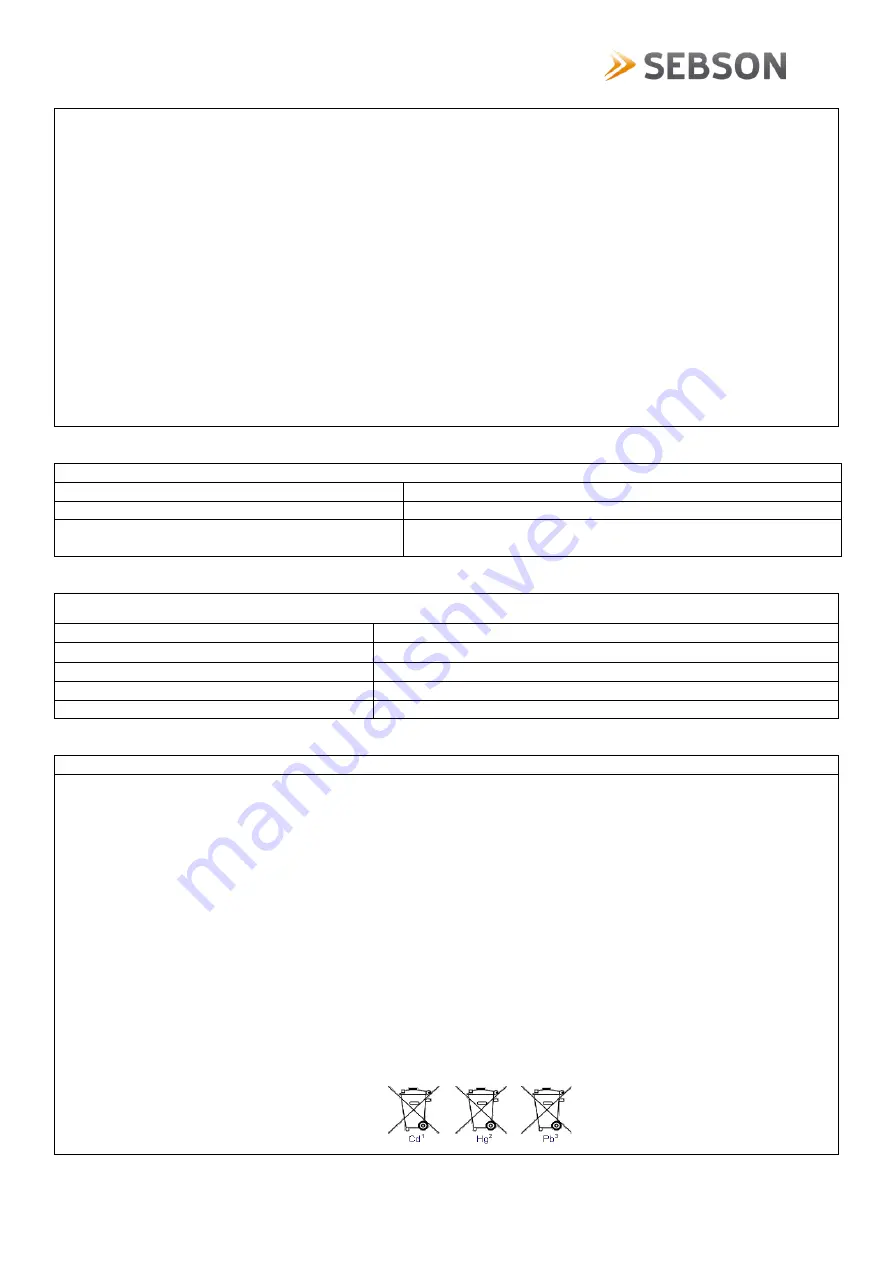
8
Commissioning:
The water detector can be put into operation immediately. Activation is not required! Place the water detector on the
floor with the sensors pointing downwards. To ensure that the water detector functions properly, make sure that the
sensors are in contact with the floor.
Note:
If neither the alarm sounds nor the LED flashes, then the unit is no longer functional and must be replaced!
Functional check:
The function of the water detector can be checked using a damp cloth. Hold the cloth against the two sensors on the
underside of the water detector. The alarm sounds immediately. The LED flashes. This checks whether the
electronics, the alarm transmitter of the water detector and the battery are working. The alarm switches off
automatically after the cloth is removed.
Recurrent self-test:
This device performs every 32 seconds a self-test. You can see this by a short blink of the LED.
Explanation of the LED modes :
LED flashes every 32 seconds:
This device is working properly..
LED flashes every second and alarm sounds:
The alarm has been triggered by water.
LED flashes every 32 seconds and a short
alarm tone sounds:
Battery is low. Replace the unit!
Technical Data:
Operating voltage:
3V DC
Battery type:
CR14250/ Li-MnO2
Energy consumption:
< 5μA (Stand-By), 45mA (Alarm)
Alarm Volume:
≥ 85dB (A) within 3m
Ambient temperature/ Humidity:
4-38°C/ <80%
Information for private households (WEEE):
The Electrical and Electronic Equipment Act (WEEE) contains a large number of requirements for the handling of
electrical and electronic equipment. The most important ones are summarised here.
1. Separate collection of waste equipment
Old, worn-out or defective electrical and electronic equipment is referred to as waste equipment. These devices must
not be disposed of in the normal household waste or together with the residual waste. The devices should be
transferred to special collection and return systems.
2. Batteries and rechargeable batteries as well as illuminants
As a rule, owners of WEEE shall separate spent batteries and accumulators that are not enclosed in the WEEE, as
well as light sources that can be removed from the WEEE without causing damage, from the WEEE before handing
it over to a collection point. This does not apply if WEEE is prepared for reuse with the participation of a public waste
management authority.
Batteries or rechargeable batteries that contain harmful substances are marked with the symbol of a crossed-out
dustbin and must not be disposed of in household waste. Below the dustbin symbol is the chemical name of the
pollutant - in the example below "Cd" for cadmium. "Pb" stands for lead, "Hg" for mercury:
If disposed of improperly, the substances contained in the batteries may cause hazards to health and the environment.
The hazards are averted by the separate collection and proper disposal of used batteries.
Summary of Contents for WD GS153W
Page 1: ...1 WD_GS153W 1 2...









































